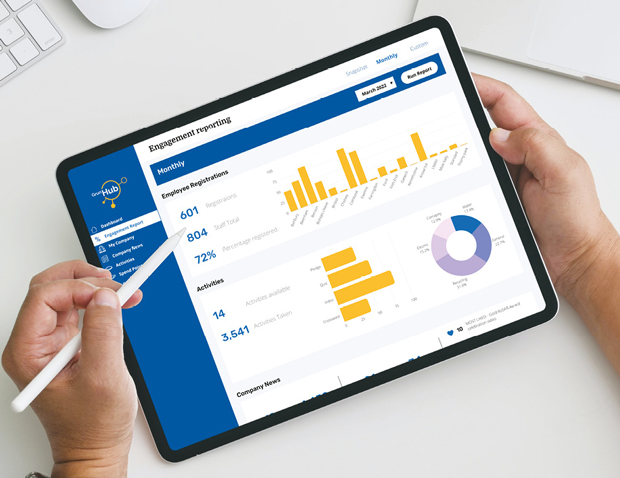SEGREGATION
The topic of rebates on segregated materials often comes up. The percentage of FMs questioned this time who said they believed a good waste management service could earn them rebates on reprocessing and recycling has actually fallen over the last three years.
Successfully achieving rebates will always be subject to having enough bulked up volume to make the waste a worthwhile commodity.
If you are a large shopping centre and have the space to install a compactor, room to store baled cardboard or polythene or coathangers, and the manpower to manage the process, then yes, we can most likely promise you a rebate if the volumes are high enough.
However, we recognise that a small restaurant or shop in London, or an office block with just a small basement and four bins, is unlikely to have either the volume or the space to store separated waste and it will be best taken away in the existing bins, while of course, maximising recycling opportunities.
This is all part of education and managing expectations. No surprise then that for the sixth year in a row, employee education and engagement programmes have been listed as number one in terms of helping FMs to promote waste management in their organisation.
Over the last three years, the percentage has crept up from just under 28 per cent to nearly 39 per cent; while 15 per cent of respondents want evidence that improved segregation and recycling can save them money; and 13 per cent say they want greater understanding of the different types of waste and how to segregate them.
WISH-CYCLING
The issue of segregation is critical. Sometimes FMs will ask us why their recycling stats aren’t higher and quite often the answer is that only 50 per cent of the waste disposed of in recycling bins was actually suitable for recycling.
We call it ‘wish-cycling’, when someone looks at an item such as a black polystyrene tray and just thinks ‘it must be recyclable’ and they put it in the mixed recycling. It isn’t and it won’t be, so it must go in general waste.
We appreciate it can be confusing, not least because many products on the market claim to be recyclable, or compostable, or biodegradable, but the reality is they aren’t. Or they require such specialist recycling facilities that they cannot be treated at a traditional Materials Recovery Facility (MRF).
Equally, sometimes we see perfectly good recyclable materials disposed of in general waste – for example, cardboard or plastics – missing an opportunity to increase recycling.
Whenever we work with customers we supply clearly-marked bins, with plenty of signage (available in different languages if required) to make it as clear and simple as possible. And if there are still questions, then just ask.
EMPLOYEE EDUCATION
In terms of increased employee education, for many years now, we have worked with customers to undertake waste awareness days, provided tips and advice, helped support Green Teams and Waste Champions, put customers forward for sustainability awards and generally done as much as we can to spread the word about the importance of recycling.
We continue to do all of those things but we also recognise that having one event on one day can’t possibly catch all employees.
That’s why we’re working with environmental behaviour change specialists Greenredeem to offer customers a new app – Greenrspace – an online employee engagement platform designed to motivate employees towards taking positive action to reduce waste, save energy and reduce water consumption.
Of the multiple environmental and sustainability responsibilities facilities professionals are responsible for, which do you think are the most important?
|
Energy consumption / achieving net zero carbon emissions |
46.49% |
|
Waste management and recycling |
25.44% |
|
Carbon footprint management |
10.53% |
|
The working environment |
7.02% |
Those two last points are really important too, because this year’s survey shows that over 46 per cent of FMs said energy consumption and achieving net zero emissions were their priority, followed by waste management and recycling.
Greenrspace encourages employees to help their employer get closer to environmental targets – for example, by increasing recycling and turning off unwanted lights – and in return, those individuals receive rewards, such as vouchers, monthly prize draws or they can donate them to a chosen charity.
The app, which can be tailored to specific businesses or sectors, includes an interactive content calendar, with smart goals set to reduce business consumption and changes measured and mapped against real costs, allowing savings to be monitored and tracked.
We see this, alongside the other activities we offer, as a good blend of traditional education and a 21st Century approach, allowing employees to have all the information at their fingertips when they need it – and be rewarded for making changes.
What are the biggest barriers to improving waste and recycling performance in your organisation?
|
Inability to engage staff with the need to recycle i.e. lack of education |
31.73% |
|
Lack of resources i.e. Budget, staff |
18.27% |
|
Physical restrictions; i.e. lack of space for bins, compactors etc |
17.31% |
Given that nearly 32 per cent of FMs said this year – and for the sixth year in a row – that inability to engage staff with the need to recycle is one of their biggest barriers, we say come on board with the app and see how it can support what you are doing.





